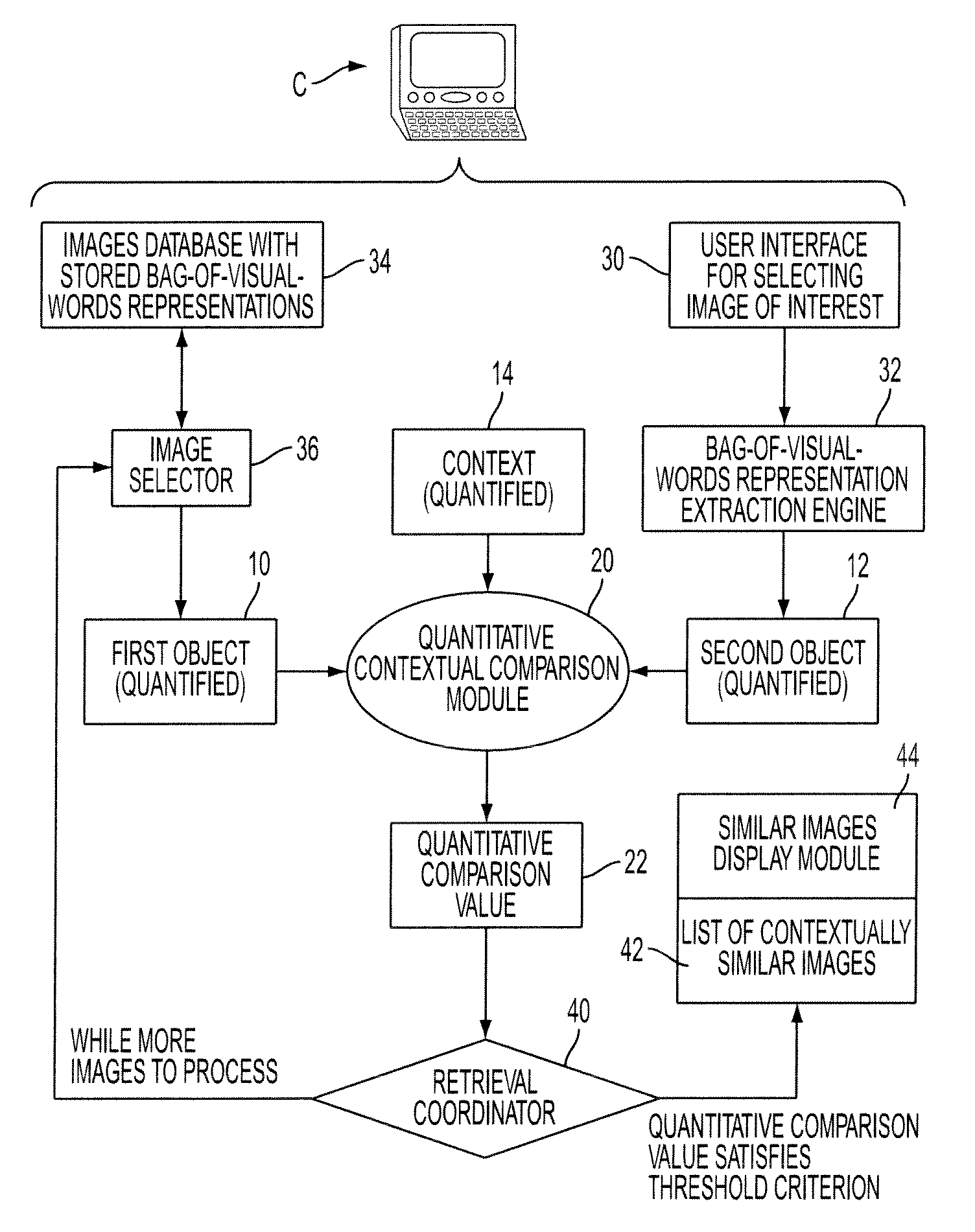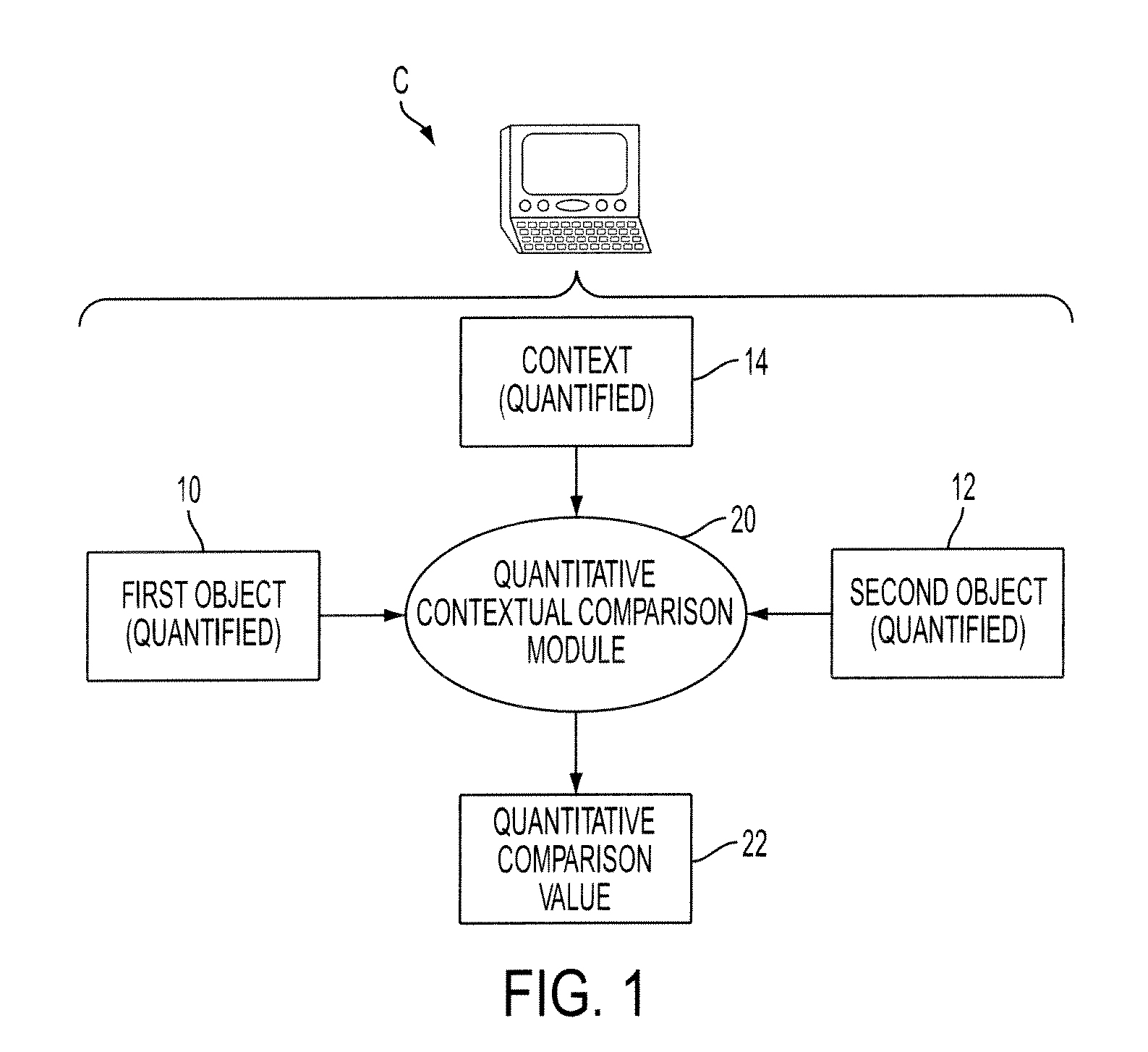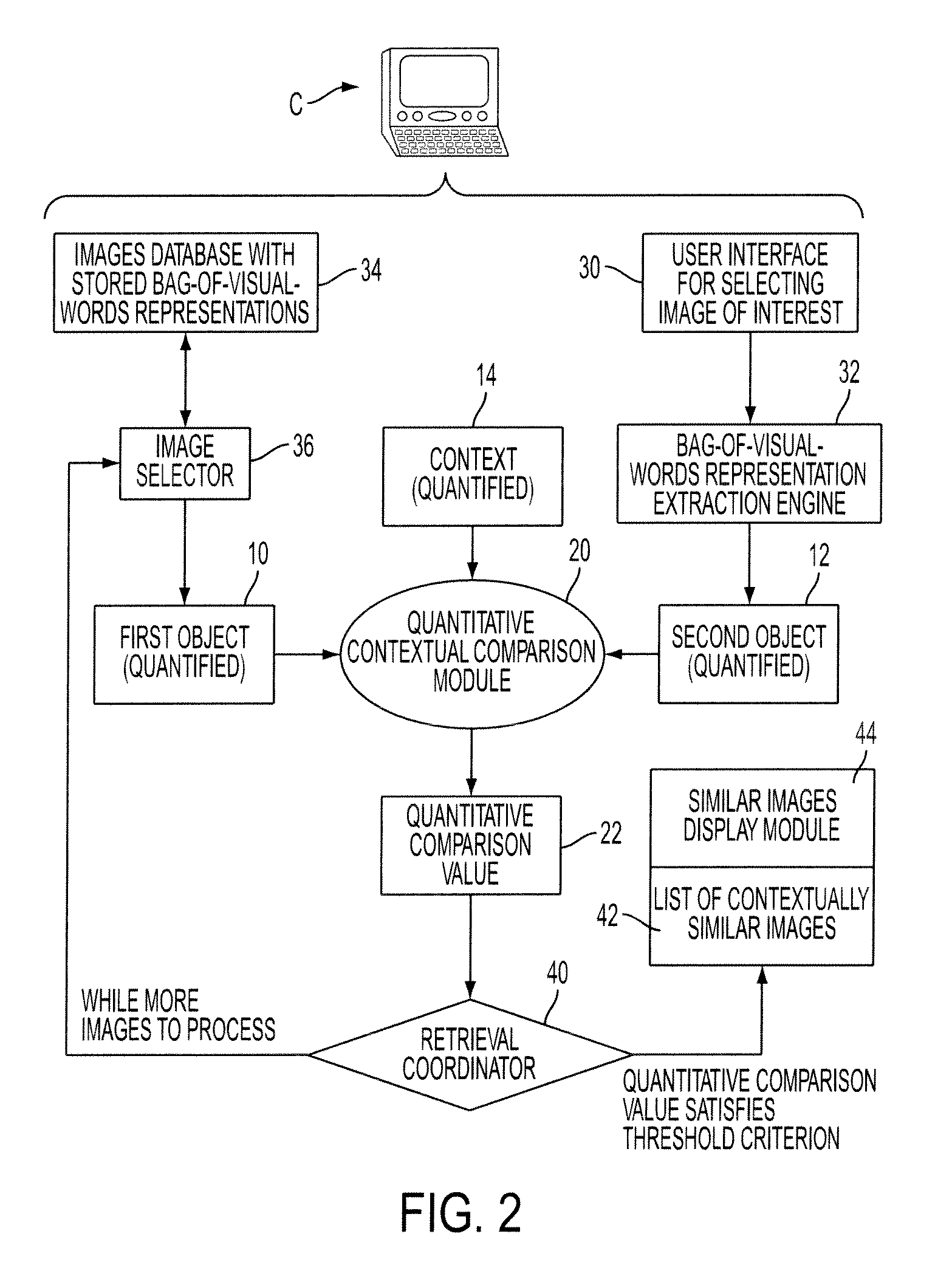Contextual similarity measures for objects and retrieval, classification, and clustering using same
a technology of contextual similarity and object, applied in the field of information processing arts, information storage and retrieval arts, classification and clustering arts, can solve problems such as informing
- Summary
- Abstract
- Description
- Claims
- Application Information
AI Technical Summary
Benefits of technology
Problems solved by technology
Method used
Image
Examples
Embodiment Construction
[0010]The previously described contextual comparison examples relating to dogs, cats, bulls, fish, and amoebas are readily qualitatively understood. However, qualitative understanding is not useful in quantitative analyses, or in information processing systems such as classifiers, information retrieval systems, clustering engines, or so forth. It is recognized herein that what is needed for such applications is quantitative contextual comparison.
[0011]With reference to FIG. 1, a first object 10, a second object 12, and a context 14 are each represented in a quantitative form, such as a discrete or continuous distribution, a vector, a sequence of vectors, or so forth. A quantitative contextual comparison module 20 computes a quantitative comparison value 22 that quantitatively indicates the similarity (or difference or divergence) between the first object 10 and the second object 12 relative to the similarity (or difference or divergence) between the first object 10 and the context 1...
PUM
 Login to View More
Login to View More Abstract
Description
Claims
Application Information
 Login to View More
Login to View More - R&D
- Intellectual Property
- Life Sciences
- Materials
- Tech Scout
- Unparalleled Data Quality
- Higher Quality Content
- 60% Fewer Hallucinations
Browse by: Latest US Patents, China's latest patents, Technical Efficacy Thesaurus, Application Domain, Technology Topic, Popular Technical Reports.
© 2025 PatSnap. All rights reserved.Legal|Privacy policy|Modern Slavery Act Transparency Statement|Sitemap|About US| Contact US: help@patsnap.com



